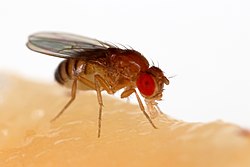Eric Francis Wieschaus | |
|---|---|
 Eric F. Wieschaus in 2011 | |
| Born | June 8, 1947 South Bend, Indiana, U.S. |
| Education | University of Notre Dame (B.S.) Yale University (Ph.D.) |
| Known for | Embryogenesis |
| Awards | Genetics Society of America Medal (1995) Nobel Prize in Physiology or Medicine (1995) |
| Scientific career | |
| Fields | Developmental biology |
| Institutions | Princeton University Robert Wood Johnson Medical School |
Eric Francis Wieschaus (born June 8, 1947, in South Bend, Indiana) is an American evolutionary developmental biologist and 1995 Nobel Prize-winner.

